They’re called TakeT Batpure, they’re tiny, they’re cheap and they can transport you physically a little more into the music.
Leggi l’articolo in italiano >>>
Those who have been following us for years know that we are not a site purely for “Hi-Fi” reviews, however, the passion for high fidelity in the editorial staff is certainly not lacking and in this specific case I would like to bring to your attention a couple of small objects, at a cost far from any “audiophile philosopher’s stone”, which, however, could give an extra gear to your listening, hoping that you have a real Hi Fi system and not a simple speaker for your smartphone (this is not a comment from “rich people”, if you are young and still can not afford it, I hope you will have one in the future).
It doesn’t matter if your Hi-Fi system is an audiophile “entry level”, because these two little ones could even change the face of speakers that have some limits, while the effects are reduced in the case of high or very high range speakers, already – hopefully – quite complete over the entire frequency spectrum.
Let’s talk about the TakeT Batpure, two so-called “Super Tweeters“.
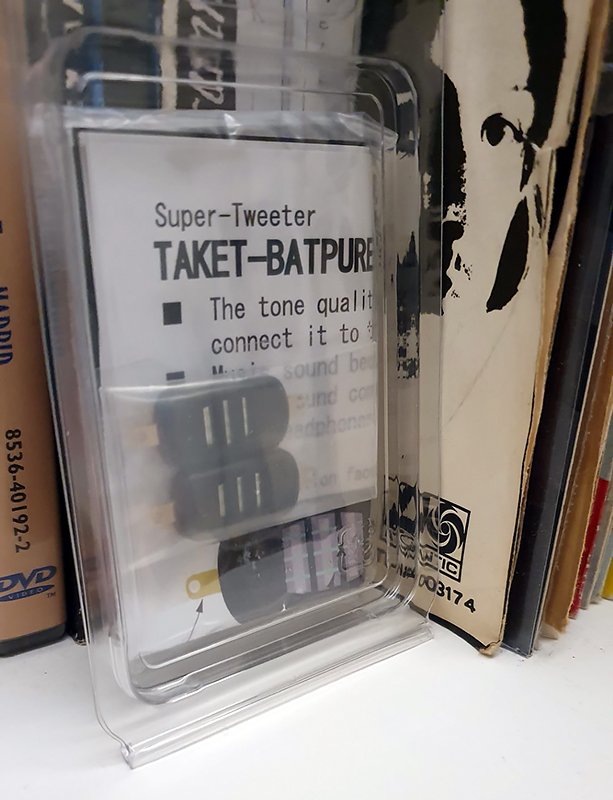
The “Super Tweeter”
I think most of you know what a tweeter is. For those who don’t know it, it’s that little driver you usually find at the top of his bigger “brothers”, which is responsible for reproducing the high frequencies of the sound spectrum.
The reproduction of mid and bass freqs is a responsibility of the other drivers, depending on whether we are talking about a two, three or more way speaker (let’s forget the concentric types, a more delicate matter).
Obviously, the interaction between all these is the task of the crossover, which acts as a trait d’union between the frequencies managed by each driver, crossing them according to a specific project.
All this creates a “complete” sound – or at least the hope is that – balanced, protected from phase issues, coherence, etc..
Having clarified this point, the super tweeter is nothing more than another means for sound diffusion, but it has the task of dealing with very high frequencies (where a simple tweeter has a “narrower” diffusion or even hints of distortion), frequencies that far exceed 20kHz, exceeding in ultrasound and then beyond the capabilities of human hearing (TakeTs declare up to 150kHz for 70dB/1m, however purely technical data because it is not possible that you can hear something on those frequencies or that there is recorded music that lives there).

Supernatural powers?
So, are we calling dogs and bats? Do we need to acquire superpowers from Marvel characters?
No, even if some jokes are often repeated, you have to know that when you talk about audio going to touch a range of frequencies is not a job with sealed compartments, any change always brings a repercussion at least on the neighboring areas (ask any sound engineer and he’ll tell you that often a trick to act on a frequency is – even – an edit on those immediately following).
So a more accentuated reproduction of frequencies that we don’t actually hear distinctly (or rather, that we don’t hear at all even if we approach the ear to the super tweeter) will still interact with the behavior of the sound even in the part of the spectrum that interests us, the one we hear as human beings… age problems aside…
It’s no a coincidence that there are many loudspeaker manufacturers who include a super tweeter in their projects (in Hi-Fi but also in Home Theatre), without selling it separately, which already makes you understand that, if for decades more than one manufacturer has not gone crazy, including some very famous names, we are not talking about “snake oil” or products related more to esotericism than to science.
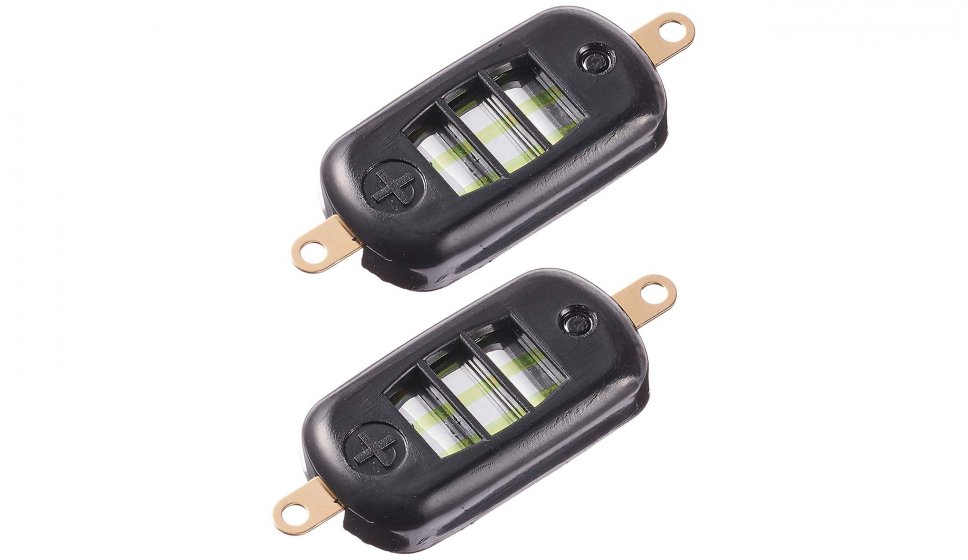
And here we are with these tiny but effective TakeT Batpure, designed in Japan and widespread all over the world. I also report for completeness what the European distributor told me, Céres Electronique:
“Many audiophiles confuse bandwidth and ability to reproduce the peaks of the signal. These two elements have no direct link, yet the ability to reproduce these “spikes” present in the musical message are very important, and present in “the archive” on the support, whatever it is, digital or analog (even if I prefer analog …). We can take as parallel the fact that the microphones, especially a few decades ago, did not exceed 18 kHz in the best case, or the tape recorders having universally served the sound recording which were limited to about 16 kHz. And yet all the details are present in the recording. So bandwidth is an important element, but it is not a single criterion.”
I would like to point out that I see a lot of people buying Batpure directly from Japan on ebay, with high shipping costs and waiting a minimum of one month. Don’t do it if you live in Europe, there’s the European distributor who will send them to you in a few days!
The price: approximately 55 euros. This is a cost that in front of most so-called “fine tuning” can be considered ridiculous and instead excellent to satisfy even a curiosity, as it was for me after all.
Moreover, Christian of Céres Electronique is a very kind and helpful person, we have exchanged various emails in which he told me about the Batpures and answered all my questions with valuable advice.
He is also a very honest person, he immediately told me that although there are many satisfied customers, others had not noticed any particular differences by installing them, probably there are variations due to the type of speakers used (we will talk about it).
If you’ve gotten this far, I know that the question is now at the tip of your tongue: okay, but then…
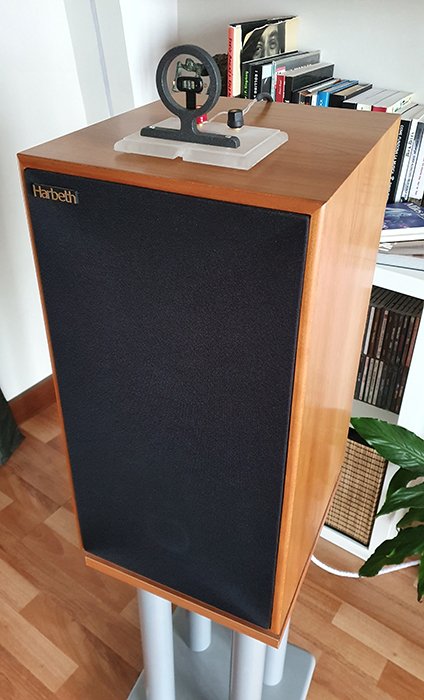
What are they for?
First of all, a question: what is the most important thing when you are listening to music? An extended bandwidth, okay. The absence of distortion, yes of course. But these are technical parameters.
Surely the thing that should interest us mostly, not really measurable/predictable with absolute precision and rules adaptable everywhere (given the diversity of listening rooms and their treatment), is the ability to recreate as much as possible a three-dimensional sound, what is called “soundstage“.
This develops in three dimensions: width, height and depth.
Generally, the more well made the speakers are, the more they can recreate this effect, literally “disappearing” while listening to music, which will no longer seem to come from the drivers, but will seem to resonate in the room and materialize holographically the musicians in your environment (and in theirs, especially if the recording is acoustic).
Of course not all records are a string quartet or an unplugged guitar concert, but even in more “artificial” territories every producer is very keen to give a precise position to the sounds and the necessary space between them.
Let’s say that the width is the most easily reachable parameter with the good positioning of the speakers, the height depends very much on these and on many small devices of fine tuning of the system, the depth is the most difficult thing to achieve, that is to separate the musicians on the plane that is in front of us in the sense of distance/proximity and not only, to recreate also the depth of the “room”, with its reverberations etc…
So, the TakeT Batpures, with their high frequency response, and indirect effect even on much lower freqs, are able to increase the sense of “ambience“, to draw sounds with more precision and amplitude in three dimensions.
As we have already said, obviously their effect is not predictable in “quantity”: if you have particularly round and “sweet” loudspeakers, maybe you will notice it immediately, with a minimum ear developed for comparisons (and an open mind!).
If you have very analitical speakers, already extended in frequency well beyond the human audible range, then you might feel very little of the effect of the Batpure, or completely nothing.
But there are variations that we will see now…
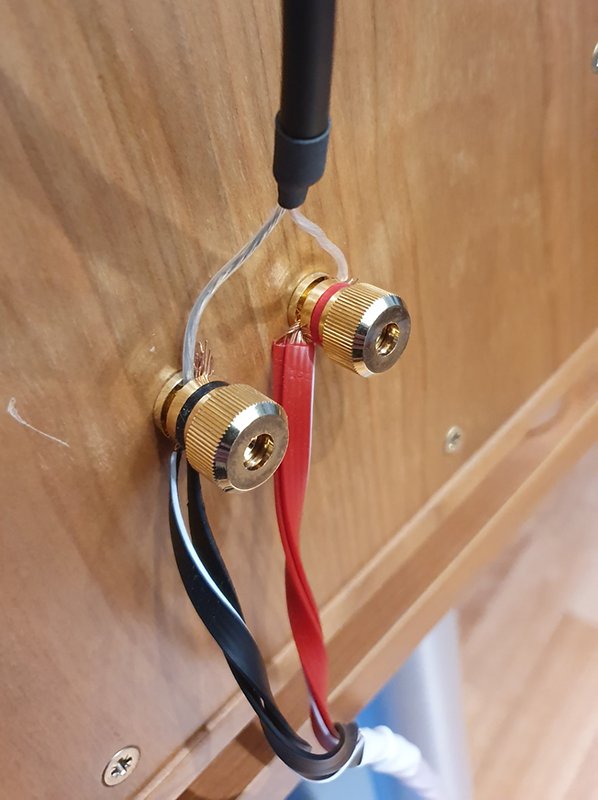
How to install
First of all, these super tweeters are really easy to install.
Lots of super tweeters on the market need to be sonically “cut”, in other words, the task of the above mentioned crossover, or maybe attenuated with resistors.
The TakeT Batpure do not need anything, we could say that they are “plug’n’play“. All you have to do is to get a pair of power cables (nothing expensive, just avoid the minimum quality…), connect the positive and negative poles indicated on each of the Batpure and then the other ends directly on the connectors of the speakers.
Nothing could be easier!
No problem with the speaker load, as the impedance of Batpure is high (4 kOhm), any system even notices it.
Now, the two TakeTs are really tiny. This would also allow you to put them to the front of the speakers with double-sided adhesive tape. But can I say that? How ugly it is!
I care a bit about design, so I asked a very good local manufacturer, Roberto Casadio, owner of CROM, to make me a couple of supports that he specifically created for the Batpure.
He makes them in wood in various finishes or, as you can see in the photos, also in plexiglass, glossy or matt.
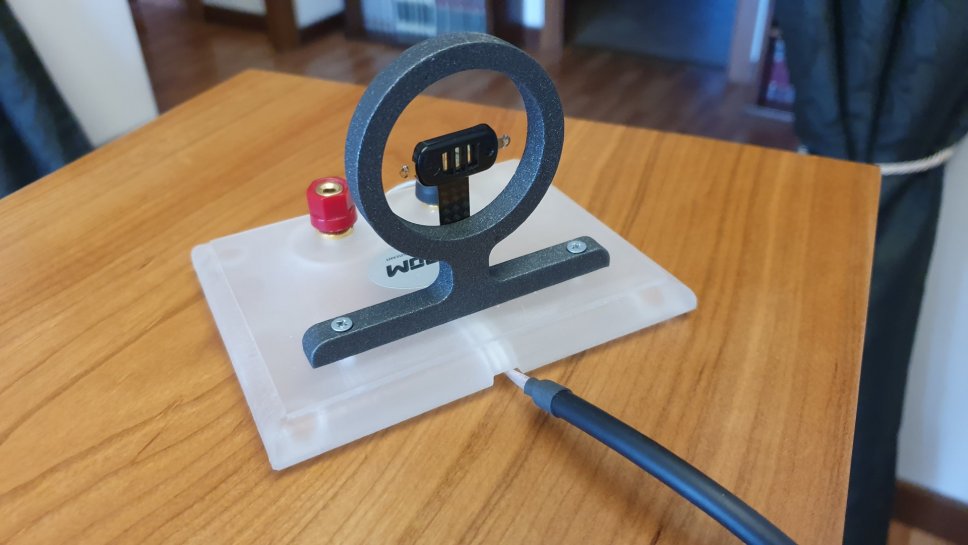
The single Batpure is installed on a small carbon band and surrounded by that beautiful metal structure that gives the whole thing a really nice look.
These stands are nice to look at but they are also functional, as we can easily change the orientation of the super tweeter and we’ll see why this is so important.
The cables are also made by CROM, nothing esoteric here but Roberto makes cables (speaker, signal and power cables) of the highest level, but obviously at a different cost.
However, this is a piece of advice, choose a suitable stand you like. I recommend, if you choose to solder the cables to the Batpure: be careful and protect them, it’s easy to throw everything in the trash…
Burn-in: the distributor has not given me any particular instructions. Casadio recommended me about ten hours of operation. I can say that there are not relevant mechanical parts in motion, but experience has taught me that any addition to a system needs a period of adjustment. Maybe also for our ears, which begin to get used to and reconstruct the sounds by grafting the new variant as a piece in a puzzle.
However, just to be sure, I have been playing for hours some special tracks for the burn-in (you can find them everywhere, from YouTube to Spotify etc…).
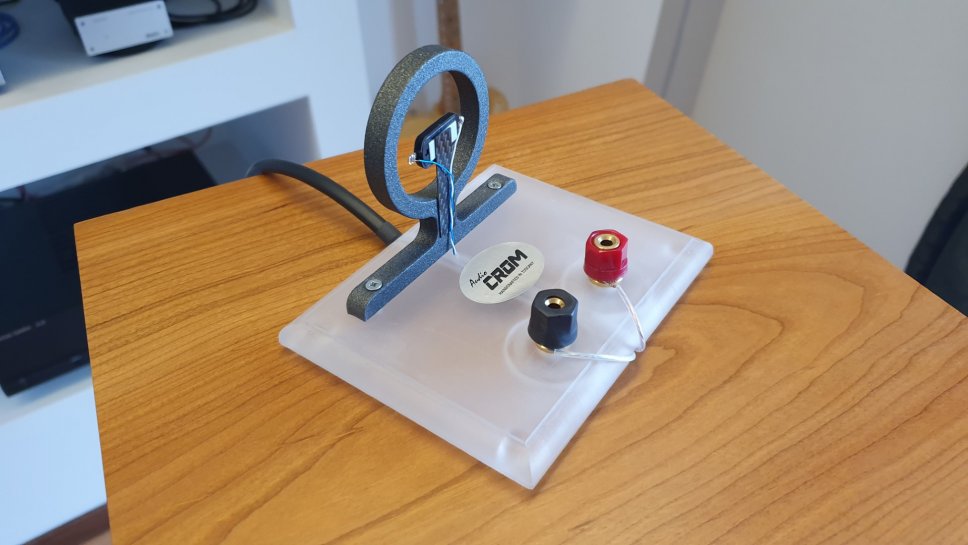
Listening test begin…
Once the TakeTs are connected, I advise you to be patient, not to be taken by preconceptions and to do everything with extreme objectivity.
I did not do tests in a single listening situation, but in two, on different types of speakers.
The first was at Roberto Casadio’s home, with his PMC 20/23 floorstanding speakers, an excellent brand and these are really good speakers in terms of big sound despite their slim dimensions.
Moreover, their sound is already pretty open at the top, so it was interesting to verify if these two little devices really worked effectively or not (I remember, as I said above, if you bring the ear closer you don’t hear any sound coming from them as it happens with the other drivers).
The PMCs were connected to a Hegel H190 amplifier, with its strong and ultra-precise sound, and to a digital system with a computer based on Raspberry + external RME DAC, a setup built by Casadio himself.
And, obiouvsly, state-of-the-art wiring.
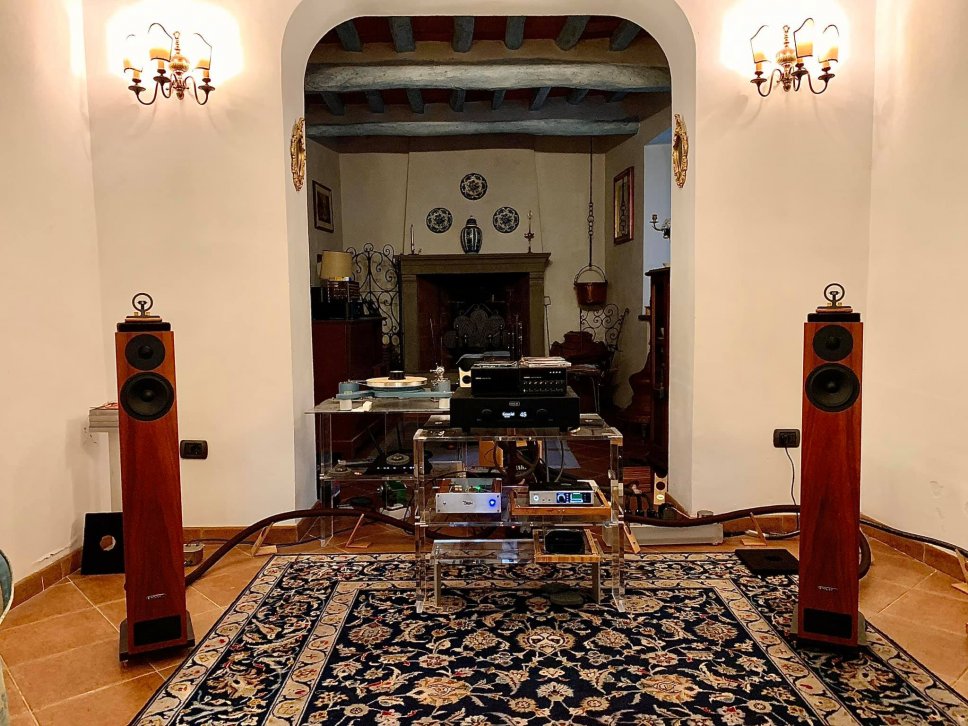
The Hi Fi system assembled by Roberto Casadio
Well, it doesn’t take long to understand that Batpures work. Obviously, it is better to listen to songs that at the top have well-structured and extended peaks.
One track that they put at almost every audiophile fair (almost a curse!) is “Keith Don’t Go” by Nils Lofgren, taken from the album Acoustic Live. In this track his acoustic guitar literally slaps you in the face and between harmonics and other techniques there is really everything on the high frequencies.
Or you can use a song in which a voice, better if a female one, is clear and well characterized and, very important, in a rather “wide” environment.
Another advice is to check with tracks of high quality drums with wide use of the cymbals.
So, removing and putting back the Batpure you won’t hear so much a banal increase in the high frequencies, but instead everything seems a bit more holographic and extended, the music seems to move in a larger space, there is a greater sense of air, of involvement, as if you had opened a “window” further on the sound.
In the case of Lofgren’s guitar, the use of the Batpure puts it even more in your face, makes the musician take a real step forward towards us.
Maybe too much…
I want to underline, in fact, that we’re talking about the Batpure facing exactly in axis with the tweeter of the speaker, towards the front of the listener.
The step forward of the guitar or, in other cases, of the voices, maybe it can also be excessive, especially with loudspeakers and tracks that are already very “sparkling”.
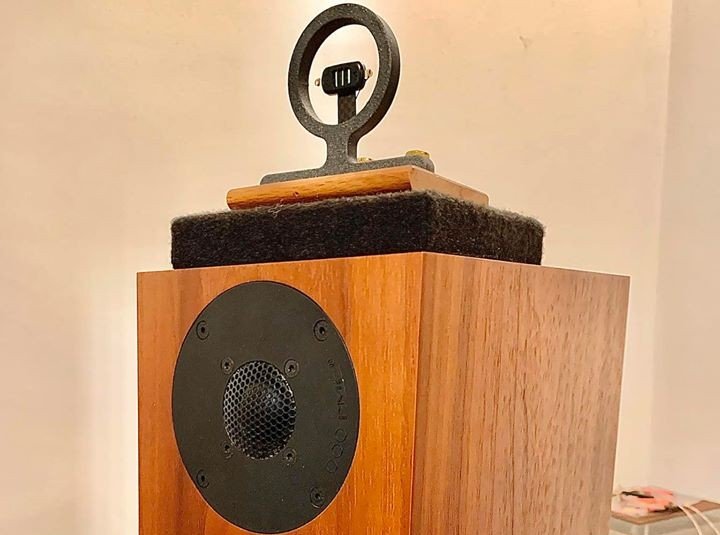
The Batpure’s “kamasutra”
Then what? Simple, you start to play with the positions. Which if you’ve put the Batpure on speakers with the bi-adhesive tape is a bit uncomfortable to do, for this reason I have recommended a mobile stand to be placed over the speaker.
Maybe not many people know about it, but there have been a lot of designs over the decades for speakers with a tweeter or super tweeter positioned exactly on the back.
This is because it is particularly in the area behind the speaker that you often have shortcomings (or problems with the bass if too close to the walls), you lose ambience, you compromise the depth of the sound.
So, inserting a super tweeter rotated 180° can be an interesting experiment to recover that ambience. Or add to that!
And don’t worry about phase problems, we’re talking about frequencies so high and signals so less strong than the main one, that there’s no problem.
Now the Batpure starts to give more satisfaction.
Personally, I have isolated two types of positions as the most interesting (and strangely not the exact 180° position).
One position sees the Batpure converging towards a central point behind the speakers. The other position, instead, wants the TakeTs facing backwards but with a more open angle, if we imagine a normal listening room you can see that they face the two left and right corners of the room.
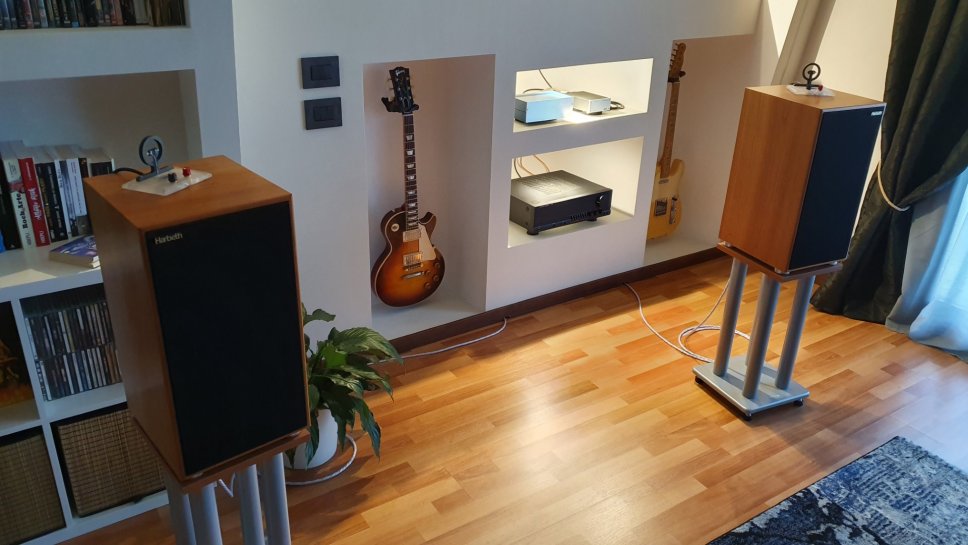
My Hi Fi system at home, back-open angle positioning
The difference between these two positions, in my opinion both good, is in the openness we give to the sound and to some effects on the focus in the centre and, incredibly, also on the low frequencies!
When open, the TakeT’s give the most emphasis to the ambience, in the centre the sound remains airy but always sharp enough (also because the speakers play and still do it as masters), maybe the bass tends to lighten a bit but it could be just a feeling of psychoacoustics given by a certain (indirect) effect of greater definition on these frequencies, which dry slightly, less boomy.
Nothing problematic, so much so that this was the preferable position, without a shadow of a doubt, at Roberto Casadio’s house with his PMCs.
So there was three-dimensionality but also everything you need in the center in terms of focus.
Turning to the back-center, you limit the width side, however still perceptible, and you focus even more on the center, the feeling is to take a half step ahead of the voices and bass freqs perhaps are even sharper (remember: we’re talking about perceptible but slight differences that don’t change the voice of your speakers!).
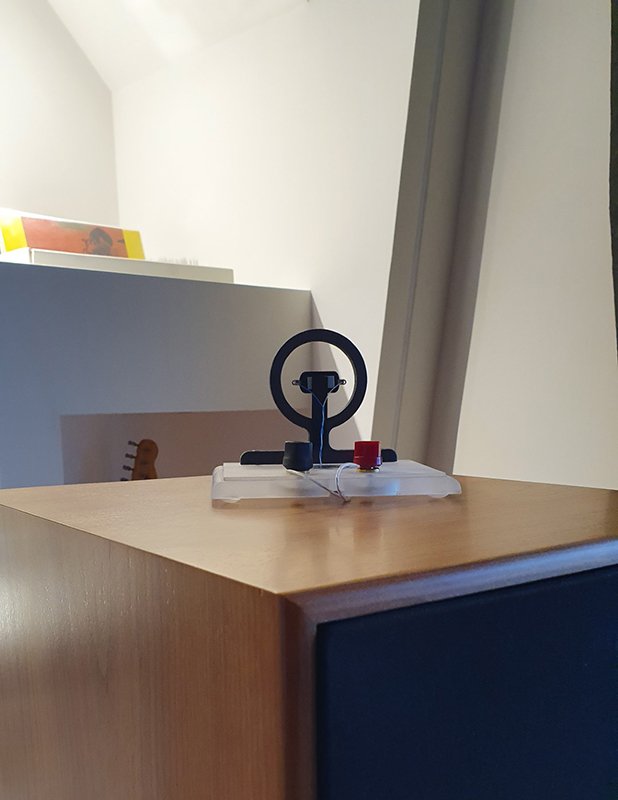
We then arrive at my home and my Hi-Fi system.
There’s a big change in the size of the room and the distance from the walls, starting from the back wall (Casadio has a lot of empty space behind the speakers having another communicating room and the speakers just between the two rooms, but my situation is more classic, behind the speakers I have a wall on which I built an acoustically isolated structure with compartments for Hi-Fi, books and more).
The loudspeakers are no longer floorstanding loudspeakers, I have a pair of Harbeth C7ES3, with their English sound derived from BBC projects and not particularly dedicated to an excess of “sparkling”, but more to sweetness and to the least possible listening fatigue, an approach that is not “lacking”, rather neutral, I would say, with a wonderful midrange.
My source is also different, being a vinyl enthusiast I mainly use my Gold Note Valore 425 Plus turntable with a Hana SL MC cartridge and the Trichord Diablo phono preamp (externally powered).
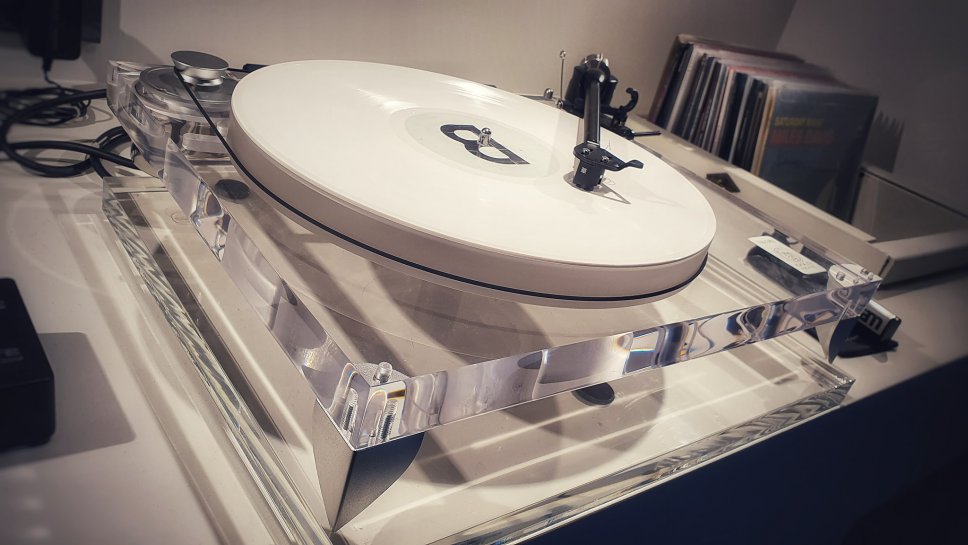
Gold Note Valore 425 Plus Acrylic
I must say that in the end I also aligned myself with the open configuration of the Batpures towards the back corners of the room (please see the update at the bottom of the article).
The PMCs are definitely more generous at the bottom, helped by the excellent Hegel, stronger than my Harman Kardon HK680, which is still a very good amp but does not have that incredible damping factor of the H190. But I have the plus that the Harbeth’s never go below 6ohm, very easy to drive.
In my case the indirect effect of the TakeT’s improves the bass freqs shape too, even if we don’t talk about floorstanding speakers that by their nature have more energy “down there”.
Take care, I’m talking about nuances, but listening for example to some tracks of Random Access Memory by Daft Punk, lower bass notes, the feeling of punch towards the point of listening, become a little bit sharper.
Moreover, as expected, the effect of the two little ones is noticeable for the diffusion at the sides of the listening point, where the sound is articulated and stretches, it spreads, leaving even more the boundaries of the speakers.
Some accompanying guitars seem wider and further ahead. A trumpet solo doesn’t seem to be on the short leash of the loudspeaker (moreover, on this instrument I was very clear about the excess of presence if the Batpure are oriented towards the listener, while turned back the instrument doesn’t lose its “range” but reaches the ear with greater sweetness and elegance).
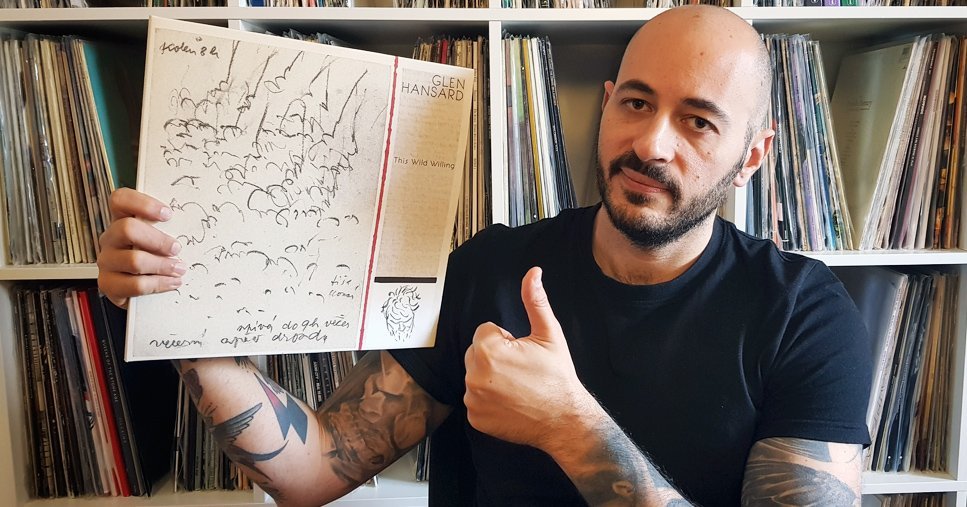
I listen to Glen Hansard’s latest album, This Wild Willing, which is a very warm record but also with great atmospheres and details and with Batpures everything sounds very coherent, wide but with warmth and focus in the center. If I was already enthusiast for the sound of this record, now I have acquired a new feeling.
You know, slight differences, but important, especially when you disconnect Batpure.
It’s important that you understand that it’s not like I’m moving the control of an equalizer, all I’m describing is a more or less subtle variation within the soundstage, which I’m aware is measurable more by my own perception than by a graduated instrument.
As always in the Hi-Fi world it is rare to find a fine tuning that is worth more than 5% on the final result, but a 5% plus a 2% plus a 3%… and the system changes its face, considerably.
I can’t give you a unique percentage for the Batpure, because it changes from speaker to speaker. There are those like me who enjoy a perceptible and pleasant effect but not “revolutionary”, those who tell me that on a pair of old Epos has radically changed the sound of the speakers (better), those who instead with the prestigious Magico S series (already extended to 50kHz) speaks of really very slight variations.
Other listeners on systems with huge horns… have declared no effect.
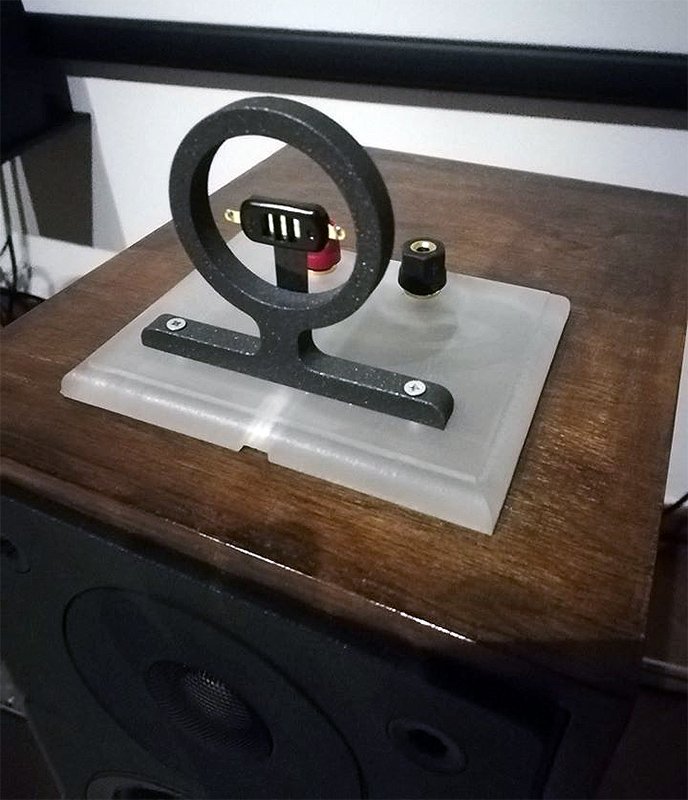
TakeT Batpure on Epos speakers
With the articulation of the sound at the back of the scene to take advantage of the TakeTs, listening to Ben Harper guitar and vocals on the acoustic tracks of his first album is a pleasure. As well as a jazz ensemble, maybe with some pretty clean reverberations.
With the acoustic tracks you notice a great naturalness and a sound embrace around the listening point. With electric tracks and situations of particular fullness, the super tweeters help to better divide the instruments, to give a feeling of less muddy sound, once you find the best position.
Listening to “Old Love” from Eric Clapton’s Unplugged, one realizes how wide the musicians’ stage is; Chuck Leavell’s piano solo, for example, places the pianist clearly to the left, the distance seems measurable by ear, though obviously not relegating him to a narrow space all to one side.
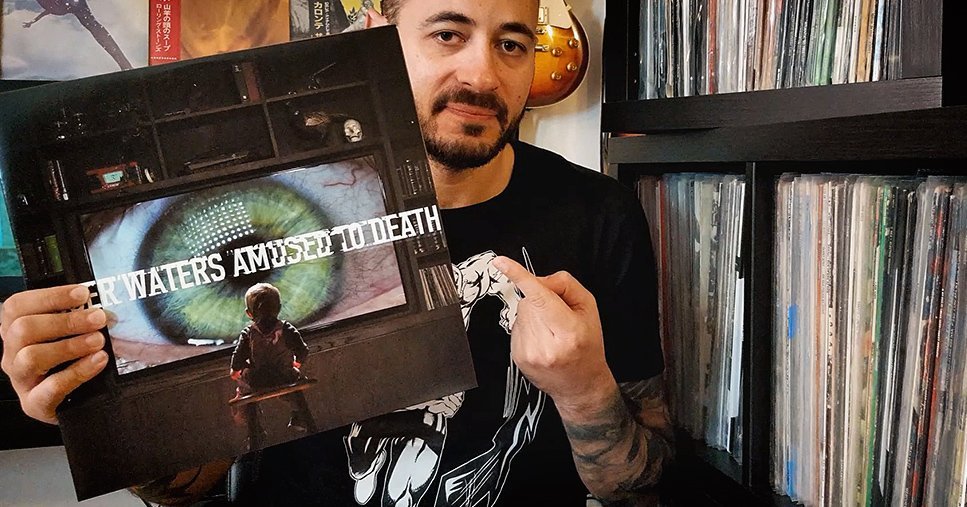
A decidedly three-dimensional record is Amused to Death by Roger Waters, recorded with a particular technology that makes stereo sound almost a dolby surround.
Here the feeling of being inside the space defined in detail in the three dimensions is clear, a rather wide cosmos made of several sounds and special effects that create a truly unique magic (listen to it in the dark and you will have shivers …).
Even in this case, this sort of virtual environment that surrounds me widens its walls a few steps compared to previous listening sessions. This album is a wonderful experience, really.
The effect of Batpure is in general, on each record, in line with the perception of more details, the sound levels are more distinguishable, a second voice almost hidden to strengthen the main singer in the mix is now more perceptible, small sound additions and even those details that make a more realistic performance (a breath, a hand rubbing on the guitar strings) tend not only to be more audible, but to find an exact place in the “map” of sounds.
Conclusions
Ultimately, are these TakeT Batpure “necessary”?
No, buy good speakers first!
Do they work?
Definitely.
Is this a snake oil?
No, it isn’t!
Revolutionary?
It depends, I wouldn’t be so sure on a system that is already very extended in frequency and well done in every part (read: expensive).
Can they give satisfaction to an affordable cost?
I think so.
Do they take time away from the passion for music in favour of endless audiophile tests?
I would say no, everything is very easy and will be in some ways very fun, so once you find the sweet spot, it will be the passion for music to benefit from it.
If you have good speakers, it may still be curious to try, as in my case. If you have some excellent speakers, it won’t be this low price that will scare you. If you have speakers that need an extra gear, it could be a pretty good upgrade for you.
Luckily we’re not dealing with one of those things where you need to have a very expensive H-Fi system to understand the effects, on the contrary, I would say that who has already a high system maybe won’t even need it.
But I repeat, for about fifty euros, trying does not hurt. At this price you would not be able to buy anything that could give you such sensations, at least in my opinion.

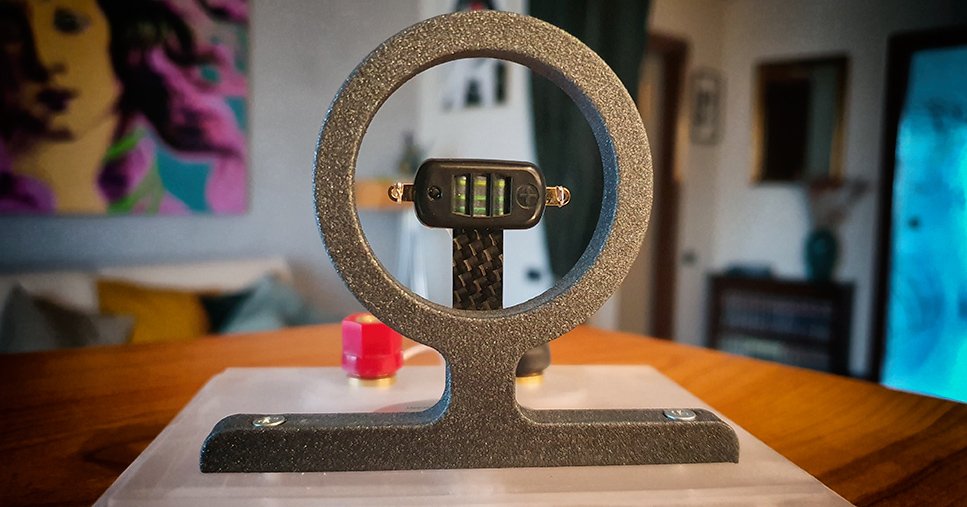








Aggiungi Commento